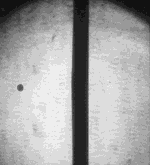
Photo from wikipedia
Abstract Despite the continuous evolution on the performance of refractory ceramic products, monolithic materials still require special attention during their processing steps as various phase transformations may take place during… Click to show full abstract
Abstract Despite the continuous evolution on the performance of refractory ceramic products, monolithic materials still require special attention during their processing steps as various phase transformations may take place during the curing, drying and firing stages. Drying is usually the longest and the most critical process observed during the first heating cycle of refractory linings, as the enhanced particle packing and reduced permeability of the resulting microstructure may lead to recurrent explosive spalling and mechanical damage associated with dewatering and the development of high steam pressure at the inner regions of such dense materials. In this context, this review article mainly addresses (i) the theoretical aspects related to the drying process of dense refractories, (ii) the influence of the phase transformations derived from the binder additives, and (iii) the usual and advanced experimental techniques to assess the water removal from consolidated castable pieces. Many studies have pointed out that due to the complex nature of this phenomenon (i.e., considering combined thermal stresses and pore pressure, heterogeneous microstructure, evolving pore structure with temperature, etc.), the mechanisms behind the water withdrawal and castables’ explosive spalling are lacking further understanding and, consequently, it has been difficult to save time and energy during the first heating of industrial equipment lined with ceramic materials. On the other hand, different methods are used for refractory spalling assessment and many efforts have been carried out in applying in situ imaging techniques (such as NMR and neutron tomography) to follow the moisture evolution during such thermal treatments. These novel techniques, also addressed in this review, might be of particular importance to provide more accurate data for the validation of many state-of-the-art numerical models, which can be used to predict the steam pressure developed in refractory systems and help in the design of proper heating schedules for such products.
Journal Title: Ceramics International
Year Published: 2021
Link to full text (if available)
Share on Social Media: Sign Up to like & get
recommendations!